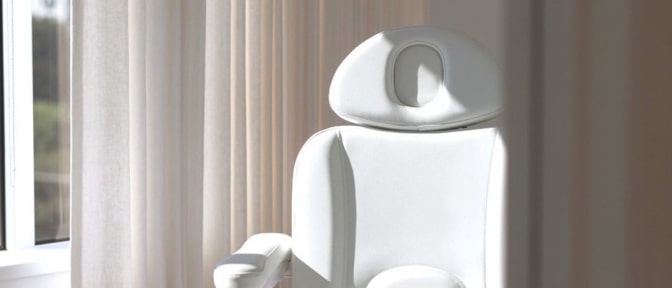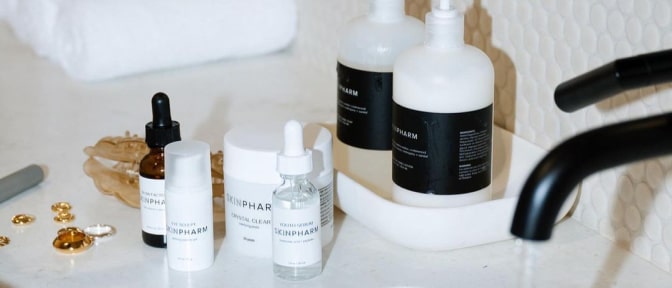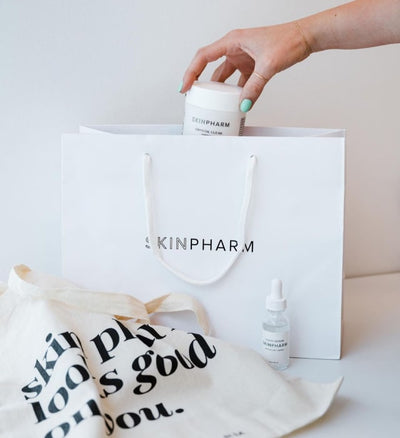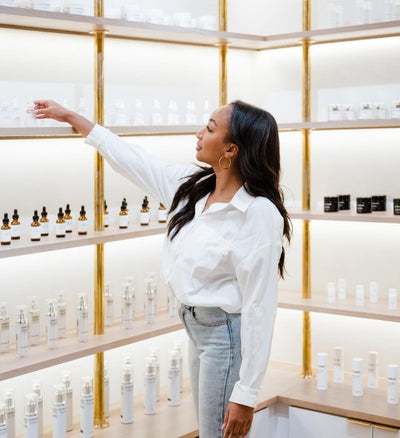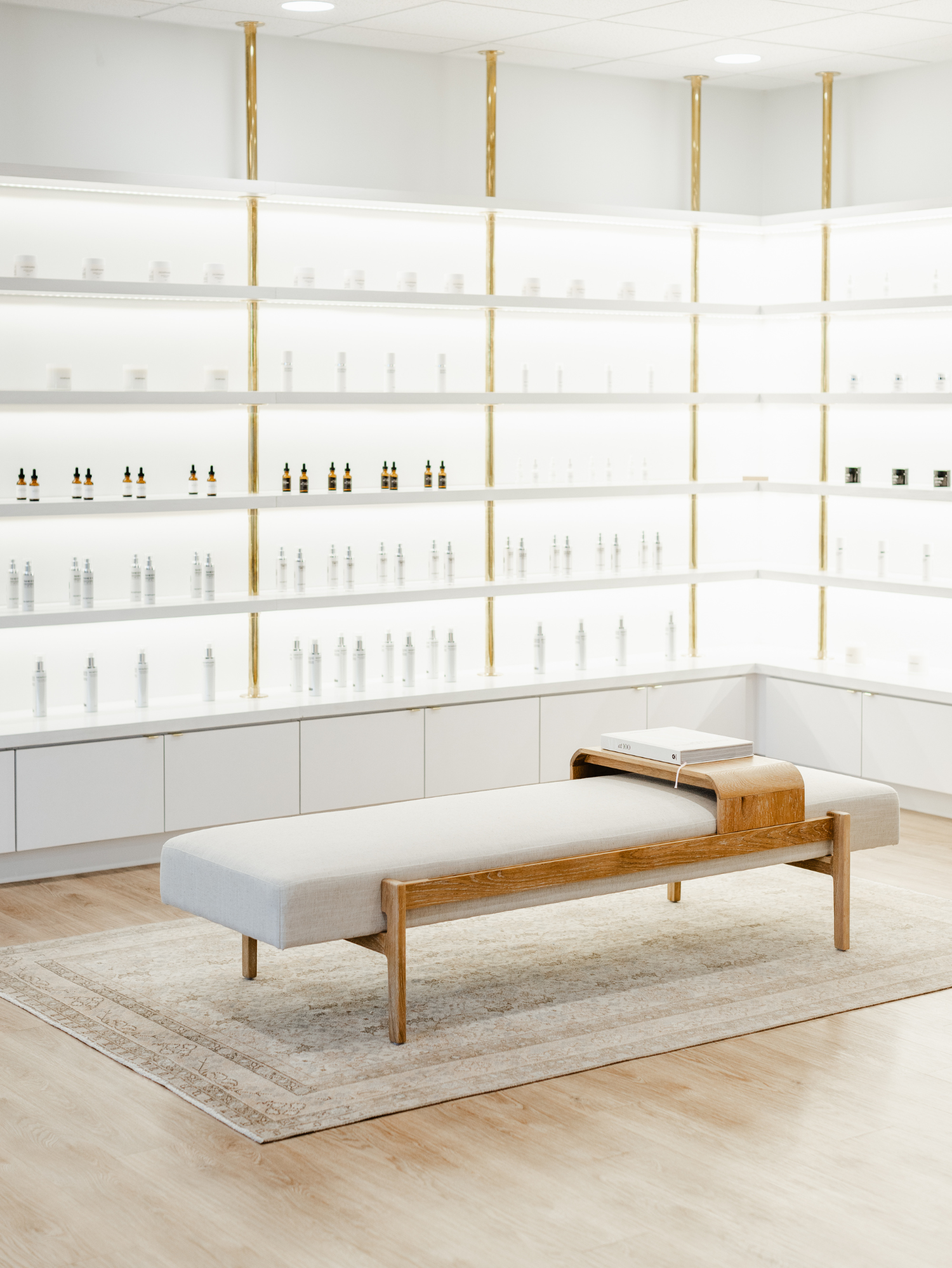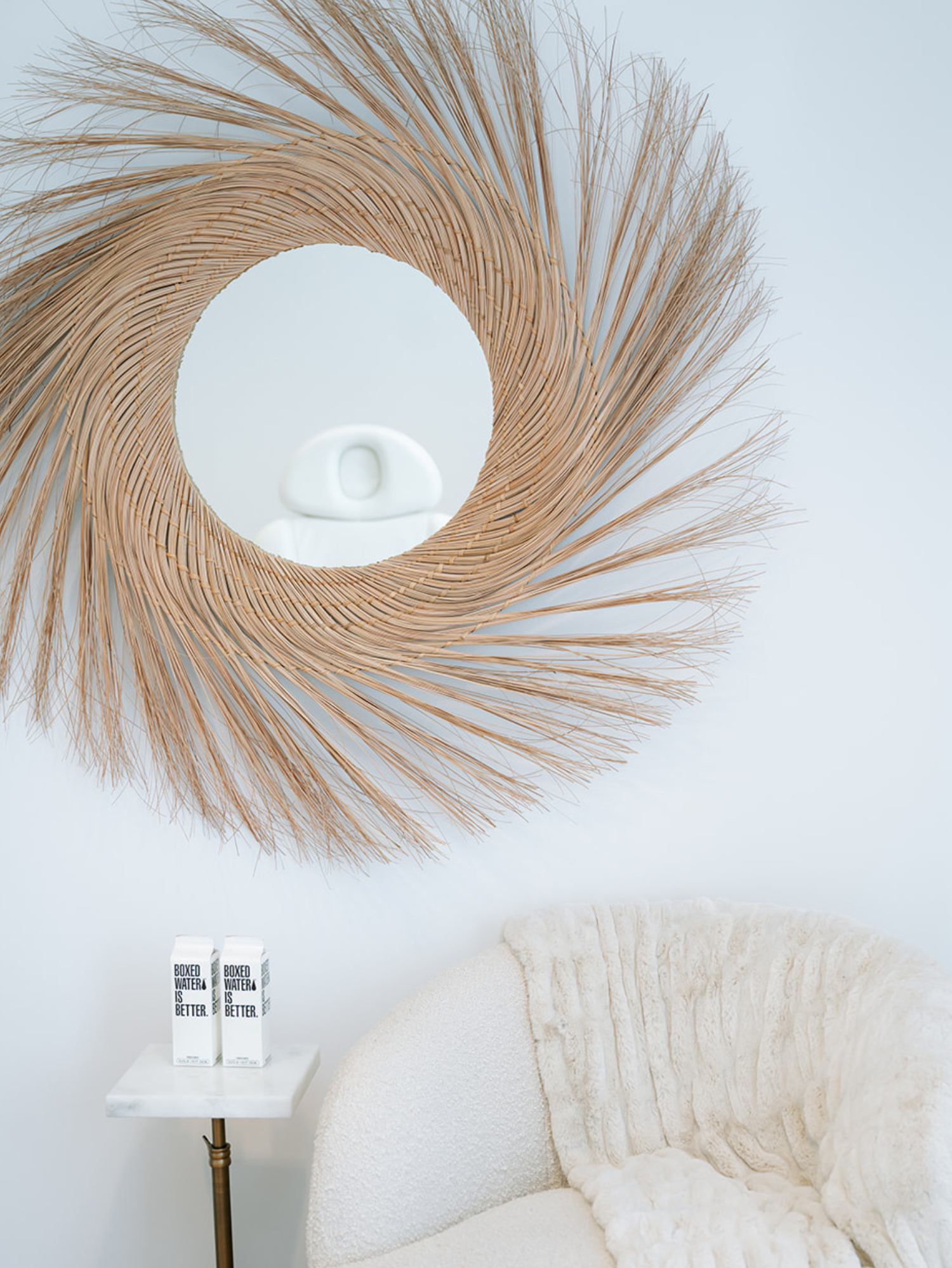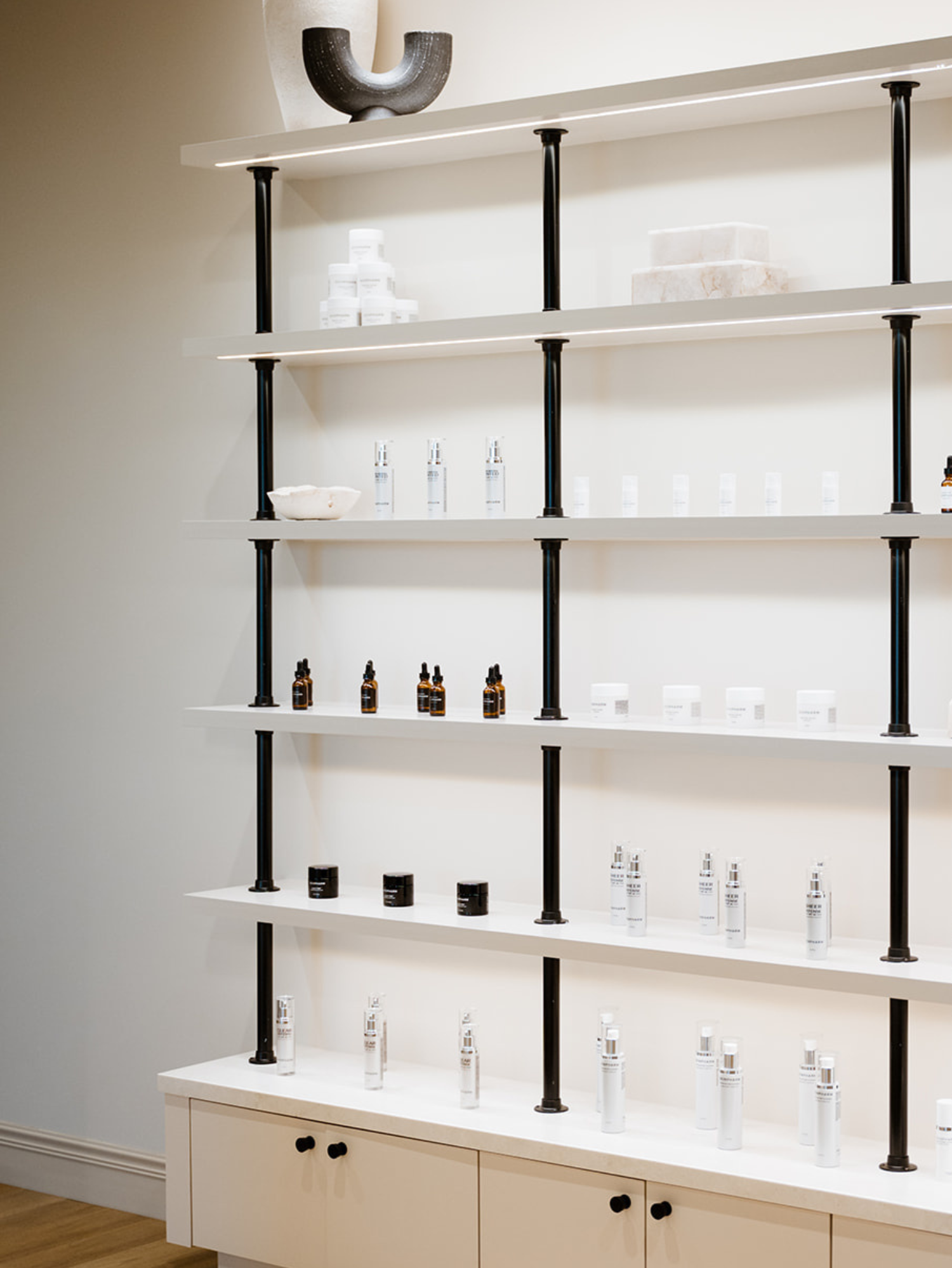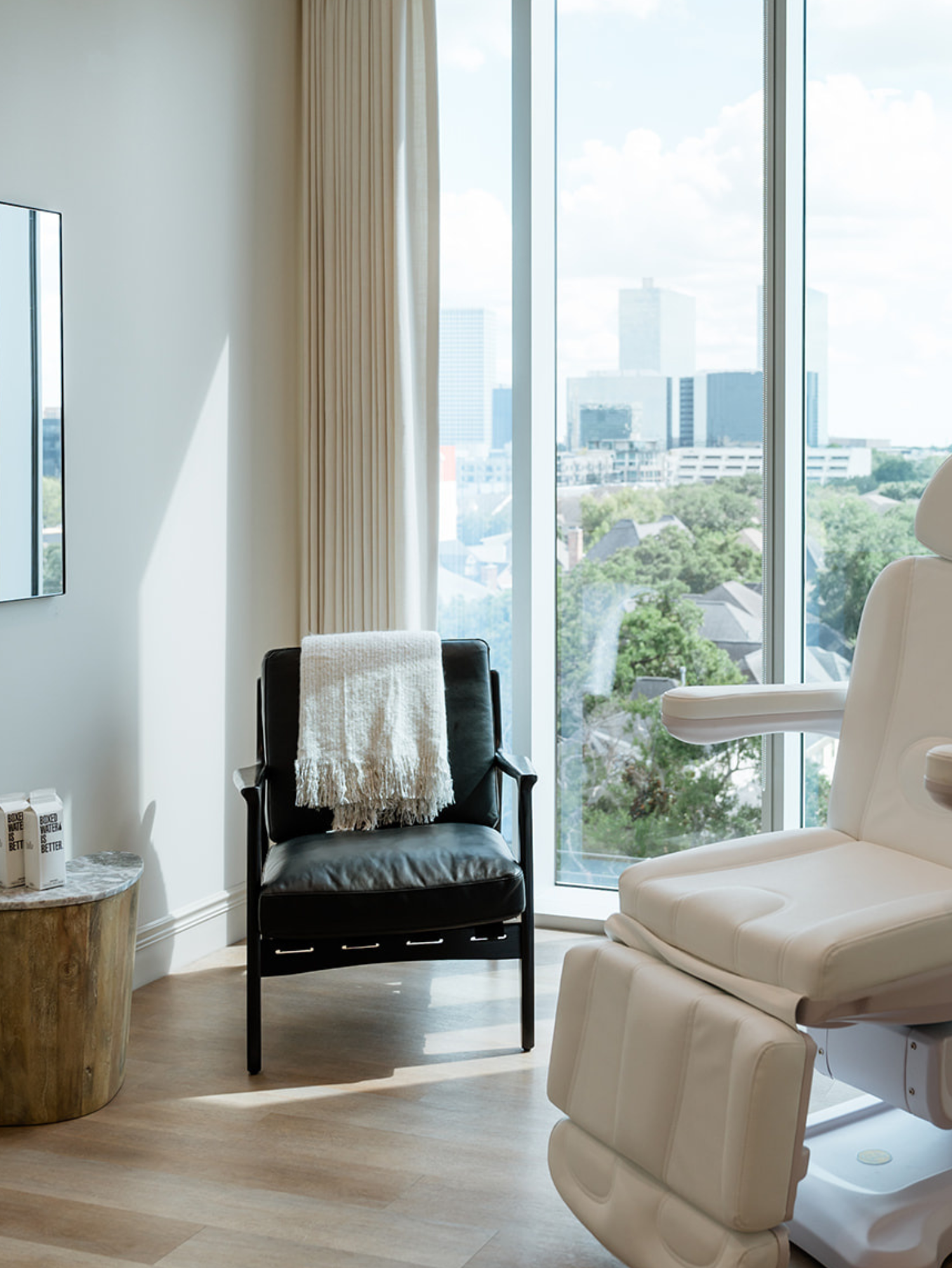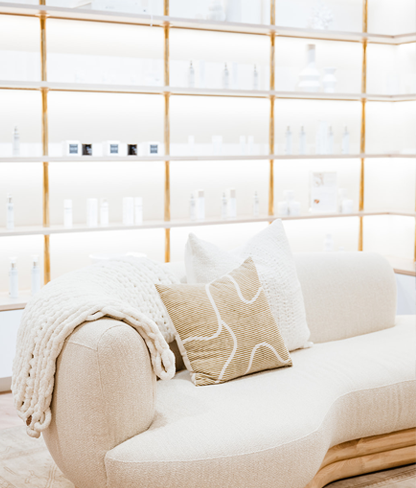Shop skin care
Clinics
VISIT OUR 9 CLINICS →
HOURS
Monday – Friday
9:30a – 5:30p
How to Incorporate Retinol Serum into Your Skin Care Routine

If you’ve done any research on anti-aging techniques, we’re sure that you’ve heard the word retinol before.
Retinol is a favorite of dermatologists and skin care experts — and for good reason!
Retinol serums create impressive results, and there really is no “bad” time to start incorporating retinol into your own skin care routine. We’ve got all you need to know about retinol and how you can start using it to transform your skin today!
Retinol 101
While you're probably familiar with the term “retinol,” what it actually is may surprise you. Retinol is a member of the vitamin A family and falls under the larger umbrella term of “retinoid.”
Once it's able to be absorbed into the skin, it's converted into an active form, known as retinoic acid. Although our bodies can process various forms of vitamin A, our skin cells contain specific receptors for retinoic acid. Once those receptors are triggered, it tells the body to speed up the process of skin cell turnover. This is the reason for all of the benefits that retinol provides — the body becomes far more effective at regenerating the skin and replaces the dull, dead skin cells at the surface of the skin more quickly with younger, healthier, more radiant skin.
Essentially, retinol works to slow down the skin’s natural aging process. When we’re younger, under the age of 30, our skin cells naturally turn over about every 28 days. As we age, though, that process starts to slow down. By our mid-30s, it may take double that amount of time for the body to produce new skin cells. That’s why skin can start to appear dull, saggy, wrinkled and dry. Our skin just isn’t efficient as it used to be, and combined with a reduction in collagen production, it just needs a little help to continue to function at its most optimal level.
What can retinol serum do for you?
Retinol serum can help you reveal your best skin. Here’s what that can really mean for you:
WRINKLE PREVENTION—
Retinol has been scientifically proven to smooth both fine lines and wrinkles associated with the natural aging process, while also helping to minimize and even prevent the formation of new ones. It also plumps up the skin, helping it to appear more firm and youthful.
BRIGHTENING —
Due to its ability to exfoliate the skin, it makes the skin appear not only brighter, but smoother as well.
ACNE TREATMENT —
Retinol can help regulate the amount of sebum you produce, which can reduce the likelihood of experiencing clogged pores. With fewer clogged pores, you’re also less likely to deal with blackheads, whiteheads, cysts and pimples.
REDUCING HYPERPIGMENTATION —
As it promotes skin cell turnover, it naturally helps fade hyperpigmentation, including dark spots, age spots and even acne scars.
Retinol is one of the most studied skin care ingredients out there, so you can rely on its efficacy if you know how to use it the right way.
Keep in mind that retinol is effective, even at lower strengths, so if you're just starting out, introduce a smaller amount (or lower frequency) and work your way up once your skin has adjusted.
How to incorporate retinol serum into your skin care routine
You’re convinced now, right? Retinol really is as amazing as people say — and you can experience the benefits easily by incorporating this serum into your nightly skin care routine! We recommend our Night Watch gentle retinol drops, so let’s discuss how you can start incorporating it into your skin care routine.
If you’ve never used a retinol before, you may want to use a technique known as buffering. Instead of applying the serum directly to your face, buffering involves mixing retinol with a hydrating moisturizer, like our Face Whip. This dilutes the retinol enough that it doesn’t cause as much sensitivity and allows your skin to get used to retinol before you start using it directly on your skin. Some people may prefer to apply their moisturizer first, followed by their retinol. Although that means the retinol isn’t able to penetrate into your skin as deeply, it'll help your skin adjust while still getting some of those great anti-aging benefits.
It’s important to keep in mind that it can take up to three months of consistent use to really see changes in your skin. If you build up your use slowly and protect your skin as you begin to incorporate retinol, the results will be well worth the wait. Starting with too much, too soon can damage your skin's moisture barrier and cause purging, so we recommend starting slow!
What order should you apply your products?
This is an incredibly common question, and for good reason! If you apply your skin care products – including any retinol serums – in the “wrong” order, it can actually impact the overall efficacy of these products on your skin.
MAKEUP REMOVAL —
Due to sun sensitivity, retinol serum should only be used at night. And to kick off your nightly routine, you should always start with removing any makeup you're wearing. (Our Gentle Soothing and Papaya Enzyme cleansers are great makeup removers!) Starting with a good cleanse allows your retinol serum to be as effective as possible.
EYE TREATMENT —
The next step is applying an eye treatment, like Eye Sculpt. This may sound like it's out of order, but because retinol serums can be harsher on the delicate skin around your eyes, it helps to protect them from irritation and sensitivity. Once your eye cream is applied, take a few minutes to let your skin dry completely. Retinol loves damp skin a little too much, and the depth that it's able to penetrate into your pores on damp skin can often be more irritating than beneficial!
RETINOL SERUM —
Once your skin is dry, it’s time to apply your retinol serum, and any other serums that you’re using. A good rule of thumb is that you want to apply your lightest serums first, working your way up to the thickest. All you need is a pea-sized amount (or a ½ dropper, if using our Night Watch gentle retinol drops), applied in upward, outward strokes. Don't neglect your neck and décolletage, either!
MOISTURIZER —
The final step is to apply a good quality moisturizer, like Face Whip, Youth Serum or High Beam brightening lotion, once your retinol serum has completely dried — expect to wait about three to five minutes. Don't skip this step! Retinol can be particularly drying, which is what causes the peeling and flakiness that some people experience when first starting to use it.
SUNSCREEN—
You’ll also want to use sunscreen the next morning to protect your skin from UV radiation. According to the American Academy of Dermatology Association, this should include an SPF of at least 30, protect against both UVA/UVB radiation and be water-resistant. Our roster of sunscreens — Sheer Defense, Clear Defense and 100% Mineral Tinted SPF — fit the bill!
Skin tip: Even if you don’t use a retinol serum, you should always use sunscreen! UV radiation is the number one environmental factor behind premature aging.
To sum things up...
When incorporating a retinol serum into your skin care routine, it’s tempting to want to rush in and start applying it right away.
However, when you know how to add it in without creating as much sensitivity or irritation, you’ll allow your skin to adjust slowly, revealing your new, youthful skin with far less chaos.
If you’re new to retinol, give Night Watch gentle retinol drops a try. You’ll be amazed at the difference you'll see in your skin!
SOURCES:
Vitamin A - Health Professional Fact Sheet | National Institutes of Health
Improvement of naturally aged skin with vitamin A (retinol) | National Library of Medicine
AAD Sunscreen FAQs | American Academy of Dermatology Association
